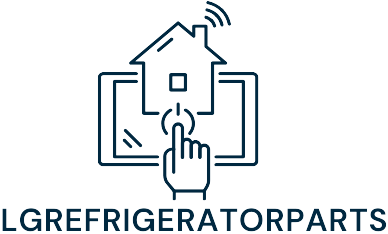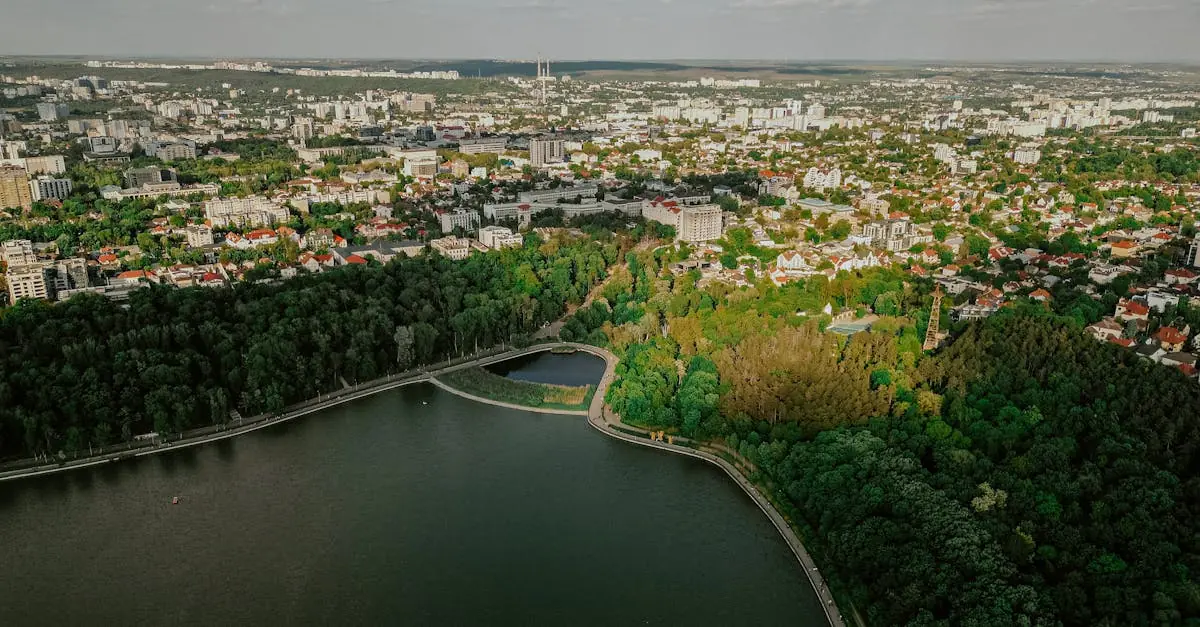Table of Contents
ToggleUrban sprawl might sound like a fancy term for a bad dance move, but it’s a serious issue affecting cities everywhere. As neighborhoods stretch further and further into the countryside, problems like traffic congestion, loss of green spaces, and skyrocketing infrastructure costs come along for the ride. Who knew that a little extra elbow room could lead to such a crowded mess?
Understanding Urban Sprawl Regulation
Urban sprawl regulation addresses the challenges posed by spreading neighborhoods encroaching on rural areas. Policymakers implement these regulations to manage land use effectively and maintain community integrity. Strategies include zoning laws, growth boundaries, and incentives for sustainable development.
Zoning laws play a critical role in regulating land use. Cities categorize areas for specific functions, such as residential, commercial, or industrial. These categories help prevent conflicts between differing land uses, promoting organized growth.
Growth boundaries establish limits on urban development. By defining the metropolitan edge, cities can preserve open space and prevent uncontrolled expansion. Research shows that communities with growth boundaries often experience better environmental and economic outcomes.
Sustainable development incentives encourage developers to adopt eco-friendly practices. Green building techniques and mixed-use developments facilitate a more efficient use of space. They reduce reliance on automobiles, directly addressing traffic congestion and pollution.
Public engagement improves the effectiveness of urban sprawl regulation. Involving community members in planning fosters transparency and aligns development with residents’ needs. Active participation creates a sense of ownership and accountability, leading to more successful implementation.
Economic considerations underpin urban sprawl regulation. Balancing growth with affordability ensures that residents can access essential services. Effective regulation stems from incorporating infrastructure costs and long-term fiscal sustainability into planning decisions.
Regular assessments of urban sprawl policies ensure they remain relevant and effective. Monitoring land usage and growth trends provides valuable insights. Continuous improvement supports adapting to changing urban dynamics and community needs.
Causes of Urban Sprawl
Urban sprawl stems from several interconnected factors. Understanding these causes helps address the sprawling landscape of urban neighborhoods.
Economic Factors
Economic incentives drive urban sprawl significantly. Developers often seek cheaper land outside city centers, which leads to the expansion of residential and commercial projects. In many cases, lower land prices in suburban areas tempt families and businesses to relocate, spurring growth beyond urban limits. Tax policies may also favor new developments over renovations of existing structures. Spacious homes with yards become more attractive as income levels rise, encouraging suburban living. Furthermore, convenient access to highways and major roads contributes to this trend, making distant areas more appealing for commuting.
Social Dynamics
Social dynamics contribute substantially to urban sprawl. Many individuals desire larger living spaces as families grow, prompting migration from densely populated urban settings to suburban neighborhoods. Issues like safety and educational opportunities often play a vital role in this decision-making process. Communities with perceived better schools and lower crime rates draw families seeking improved quality of life. Social status can also influence preferences for spacious homes in well-planned neighborhoods. Additionally, cultural trends that celebrate homeownership motivate individuals to pursue larger properties, giving rise to sprawling suburbs.
Impact of Urban Sprawl
Urban sprawl significantly impacts various aspects of society. Understanding these implications is vital for addressing the challenges associated with unplanned urban expansion.
Environmental Consequences
Urban sprawl contributes to environmental degradation. Increased development leads to habitat destruction, affecting local wildlife populations. Air pollution worsens due to higher vehicle emissions as people commute long distances. Water quality suffers as runoff from impervious surfaces pollutes local water bodies. Climate change effects become more pronounced, with sprawling areas often lacking adequate green space to absorb carbon emissions. Loss of agricultural land diminishes food production potential, raising concerns about food security.
Economic Effects
Economic implications of urban sprawl are considerable. Infrastructure costs increase, requiring substantial government investment for roads, utilities, and services in newly developed areas. Property taxes may rise as municipalities seek to fund these expenditures. While some developers benefit from cheaper land, residents in sprawling communities face long commutes, leading to higher transportation costs. Job accessibility decreases, making it tougher for individuals without reliable transportation to find employment. Local businesses often struggle to thrive in dispersed populations, diminishing economic vitality in affected regions.
Regulatory Approaches to Urban Sprawl
Regulatory approaches play a vital role in managing urban sprawl. These methods focus on promoting sustainable growth while effectively using land resources.
Land Use Planning
Land use planning involves organizing land into distinct zones for residential, commercial, and industrial purposes. Effective planning reduces conflicts between different land uses. It also encourages density in urban areas, which helps preserve surrounding green spaces. Communities benefit when planners consider accessibility, services, and environmental impacts. Collaboration between stakeholders, including local governments and residents, strengthens the planning process. Successful initiatives often incorporate smart growth principles to promote compact, walkable neighborhoods.
Zoning Laws
Zoning laws categorize areas for specific functions. These regulations shape development patterns by controlling land use types, building heights, and densities. Restricting urban expansion helps maintain a sense of community and prevents overcrowding. By designating buffers between residential and industrial zones, zoning protects property values and enhances quality of life. Compliance with zoning laws often aligns development with master plans, fostering integrated community development. Regular updates to these laws ensure they reflect evolving needs and are effective in curbing sprawl.
Case Studies in Urban Sprawl Regulation
Several cities have successfully implemented strategies to combat urban sprawl. They demonstrate effective management of land use while maintaining community integrity.
Successful Examples
Portland, Oregon, serves as a model with its Urban Growth Boundary (UGB) policy, which curbs outward expansion and preserves surrounding agricultural land. San Francisco, California, follows suit by promoting high-density development in urban areas, reducing the demand for suburban sprawl. Minneapolis, Minnesota, achieved success through its 2040 Plan, which encourages mixed-use developments and improves public transit access. Each of these cities illustrates how effective policies can mitigate the negative impacts of urban sprawl.
Lessons Learned
Cities emphasize the importance of public engagement in each of these cases. Residents’ input leads to regulations that align with community needs, making development more accepted. Regular assessments also prove essential, allowing flexibility in policy adjustments. Collaboration among government entities, developers, and community members strengthens these regulations. Adaptability ensures that urban sprawl management remains effective as urban dynamics evolve. Ultimately, these lessons reveal the multifaceted approach necessary for sustainable urban development.
Addressing urban sprawl requires a multifaceted approach that combines effective regulation with community engagement. Policymakers must prioritize sustainable development practices while considering the unique needs of their communities. The successful examples from cities like Portland and San Francisco demonstrate that with the right strategies in place, it’s possible to balance growth with environmental preservation.
Continuous evaluation of regulations and proactive collaboration among stakeholders will ensure that urban areas can evolve without sacrificing quality of life. As urban dynamics shift, adapting policies will be crucial in fostering vibrant, livable communities that thrive in harmony with their surroundings.



